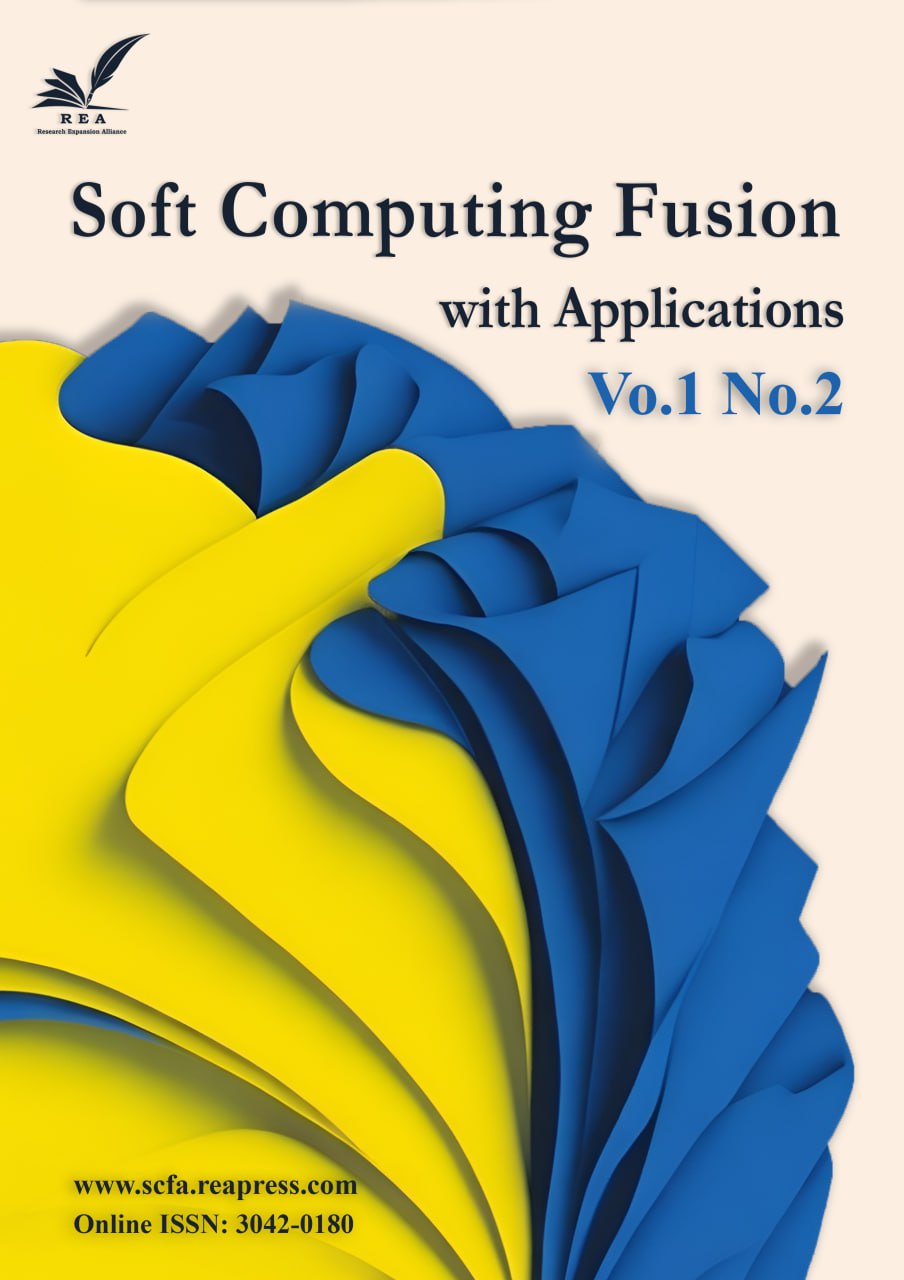Some Characterization of Fermatean Fuzzy L-ring Ideals
Abstract
The Fermatean fuzzy set (FFS) represents a robust approach for addressing ambiguity, effectively managing issues that remain unresolved by Intuitionistic fuzzy set and Pythagorean fuzzy set concepts. Due to its practical utility and significant impact on tackling real-world challenges across various domains, FFS has spurred extensive research. This study defines Fermatean fuzzy sublattice and Fermatean fuzzy lattice. Additionally, it introduces Fermatean fuzzy L-ring ideals. The paper explores the concept of homomorphism within Fermatean fuzzy sets. Furthermore, it investigates important findings concerning the image and pre-image of Fermatean fuzzy L-ring ideals, utilizing properties of infimum and supremum. The results are illustrated through pertinent numerical examples.
Keywords:
Intuitionistic fuzzy sets, Pythagorean fuzzy sets, Fermatean fuzzy sets, Fermatean fuzzy lattice, Fermatean fuzzy L-ring idealReferences
- [1] Adak, A. K. (2020). Interval-valued intuitionistic fuzzy subnear rings. In Handbook of research on emerging applications of fuzzy algebraic structures (pp. 213-224). IGI Global Scientific Publishing. https://doi.org/10.4018/978-1-7998-0190-0.ch013
- [2] Ajmal, N., & Thomas, K. V. (1995). The lattices of fuzzy ideals of a ring. Fuzzy sets and Systems, 74(3), 371-379. https://doi.org/10.1016/0165-0114(94)00313-V
- [3] Ajmal, N. (1994). Homomorphism of fuzzy groups, correspondence theorem and fuzzy quotient groups. Fuzzy sets and systems, 61(3), 329-339. https://doi.org/10.1016/0165-0114(94)90175-9
- [4] Atanassov, K. T. (1986). Intuitionistic fuzzy sets. Fuzzy sets and systems, 20(1), 87-96. https://doi.org/10.1016/S0165-0114(86)80034-3
- [5] Atanassov, K. T. (1994). New operations defined over the intuitionistic fuzzy sets. Fuzzy sets and Systems, 61(2), 137-142. https://doi.org/10.1016/0165-0114(94)90229-1
- [6] Brikhoff, G. (1967). Lattice theory. American mathematical theory providence, Rhode, Island. https://B2n.ir/pj7540
- [7] Burillo López, P., & Bustince Sola, H. N. (1995). Intuitionistic fuzzy relations:(Part I). Mathware & soft computing. 2(1), 5-38. https://B2n.ir/mg5547
- [8] Burrillo, P. J., & Bustince, H. (1995). Intuitionistic fuzzy relations (Part II). Effect of Atanassov's operators on the properties of the intuitionistic fuzzy relations. Mathware and soft computing, 2(2), 117-148. https://eudml.org/doc/39052
- [9] Chandrasekharan Rao, K., & Swaminathan, V. (2008). Anti-homomorphism in near rings. Journal of the institute of mathematics and computer sciences (Mathematical series), 21(2), 83-88. https://www.researchgate.net/publication/267430650
- [10] Jin-Xuan, F. (1994). Fuzzy homomorphism and fuzzy isomorphism. Fuzzy sets and systems, 63(2), 237-242. https://doi.org/10.1016/0165-0114(94)90354-9
- [11] Hassan, A. A. M. (1999). On fuzzy rings and fuzzy homomorphisms. Journal of fuzzy mathematics, 7, 291-304.
- [12] Ahn, Y. S., Hur, K., & Kim, D. S. (2005). The lattice of intuitionistic fuzzy ideals of a ring. Journal of applied mathematics & informatics, 19(1), 551-572. https://www.koreascience.kr/article/JAKO200504840588221.pub?&lang=en
- [13] Hur, K., Jang, S. Y., & Kang, H. W. (2005). Intuitionistic fuzzy ideals of a ring. Theoretical mathematics and pedagogical mathematics, 12(3), 193-209. https://koreascience.kr/article/JAKO200507521979074.page
- [14] Hur, K., Kang, H. W., & Song, H. K. (2003). Intuitionistic fuzzy subgroups and subrings. Honam mathematical journal, 25(1), 19-41. https://koreascience.kr/article/JAKO200310102424449.page
- [15] Kim, K. H., & Jun, Y. B. (2002). Intuitionistic fuzzy ideals of semigroups. Indian journal of pure and applied mathematics, 33(4), 443-449. https://www.researchgate.net/publication/292636449
- [16] Kim, K. H., & Jun, Y. B. (2001). Intuitionistic fuzzy interior ideals of semigroups. International journal of mathematics and mathematical sciences, 27(5), 261-267. https://doi.org/10.1155/S0161171201010778
- [17] Kim, K. H., & Lee, J. G. (2005). On intuitionistic fuzzy bi-ideals of semigroups. Turkish journal of mathematics, 29(2), 201-210. https://journals.tubitak.gov.tr/math/vol29/iss2/9
- [18] Kuncham, S. P., & Bhavanari, S. (2005). Fuzzy prime ideal of a gamma near ring. Soochow journal of mathematics, 31(1), 121-129. https://www.researchgate.net/publication/267027652
- [19] Meena, K., & Thomas, K. V. (2011). Intuitionistic L-fuzzy subrings. International mathematical forum, 6(52), 2561-2572. https://www.researchgate.net/publication/268435419
- [20] Natrajan, R., & Moganavalli, S. (2012). Fuzzy sublattice ordered rings. International journals of contemporary mathematical sciences, 7(13), 625-630. https://B2n.ir/yn8147
- [21] Olson, D. M. (1978). A note on the homomorphism theorem for hemirings. International journal of mathematics and mathematical sciences, 1(4), 439-445. 10.1155/S0161171278000447
- [22] Palaniappan, N., & Arjunan, K. (2006). The homomorphism, anti-homomorphism of a fuzzy and anti fuzzy ideals. Varahmihir journal of mathematical sciences, 6(1), 181-188. https://www.researchgate.net/publication/265700351
- [23] S. K. Sardar, S. K. Majumder., & M. Mandal. (2011). Atanassov’s intuitionistic fuzzy ideals of Γ-semigroups. International journal of algebra, 5(7), 335-353. https://B2n.ir/gf6464
- [24] Sasireka, K. R., Sathappan, K. E., & Chellappa, B. (2016). Intuitionistic fuzzy L-filters. International journal of mathematics and its applications, 4(2), 171-178.
- [25] Senapati, T., & Yager, R. R. (2019). Some new operations over Fermatean fuzzy numbers and application of Fermatean fuzzy WPM in multiple criteria decision making. Informatica, 30(2), 391-412. https://doi.org/10.3233/INF-2019-1216
- [26] Sheikabdullah, A., & Jeyaraman, K. (2010). Anti-homomorphisms in fuzzy ideals of rings. International journal of contemporary mathematical sciences, 5(55), 2717-2721. https://www.researchgate.net/publication/228738949
- [27] Thomas, K. V., & Nair, L. S. (2011). Intuitionistic fuzzy sublattices and ideals. Fuzzy information and engineering, 3(3), 321-331. https://doi.org/10.1007/s12543-011-0086-5
- [28] Thomas, K. V., & Nair, L. S. (2011). Rough intuitionistic fuzzy sets in a lattice. International mathematics forum, 6(27), 1327-1335. https://www.researchgate.net/publication/265893265
- [29] Tripathy, B. K., Satapathy, M. K., & Choudhury, P. K. (2013). Intuitionistic fuzzy lattices and intuitionistic fuzzy Boolean algebras. International journal of engineering and technology, 5(3), 2352-2361. https://www.researchgate.net/profile/Bk-Tripathy/publication/274255232
- [30] Yager, R. R., & Abbasov, A. M. (2013). Pythagorean membership grades, complex numbers, and decision making. International journal of intelligent systems, 28(5), 436-452. https://doi.org/10.1002/int.21584
- [31] Yager, R. R. (2013). Pythagorean fuzzy subsets. 2013 joint IFSA world congress and NAFIPS annual meeting (IFSA/NAFIPS) (pp. 57-61). IEEE. https://doi.org/10.1109/IFSA-NAFIPS.2013.6608375
- [32] Wang, G. J. (1984). Order-homomorphisms on fuzzes. Fuzzy sets and Systems, 12(3), 281-288. https://doi.org/10.1016/0165-0114(84)90074-5
- [33] Zadeh, L. A. (1965). Fuzzy sets. Information and control, 8(3), 338-353. https://doi.org/10.1016/S0019-9958(65)90241-X


